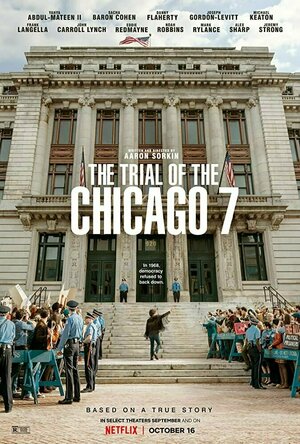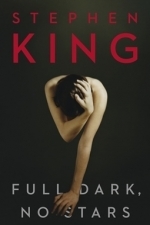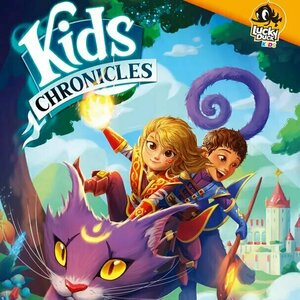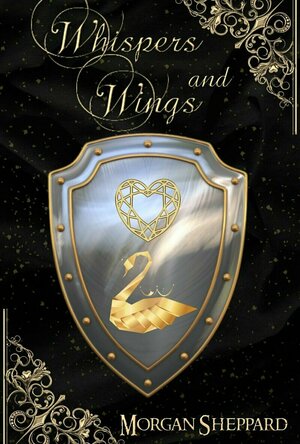Bob Mann (459 KP) rated The Trial of the Chicago 7 (2020) in Movies
Oct 24, 2020
I know a decent bit of 20th century history, but this is a story I knew nothing about. At the 1968 Democratic Convention in Chicago, anti-Vietnam protests resulted in a violent and brutal confrontation with the police. Eight of the ring-leaders were rounded up and charged with inciting the violence. What happens in the court with the eight convicted men, in front of an old and partisan judge (the wonderful Frank Langella), is simply amazing.
There's a nice wiki article on the history you can look up. But its worth watching the movie blind, since it's a great rollercoaster ride.
If you read my blog regularly, you'll know that one of my favourite of the awards in award season is the "Ensemble Cast" award from the Screen Actor's Guild (SAG). I think a good measure of which movies might be good candidates for this award is when you find it difficult to single out particular actors for an individual award when they all work so well together. For this is a cast to die for:
- Sacha Baron Cohen, as Abbie Hoffman: an intelligent 'straight' role, poles apart from Borat and Bruno, that he delivers on 100%;
- Jeremy Strong as Hoffman's buddy Jerry Rubin, doing an enormously entertaining turn;
- Eddie Redmayne as the apparently 'sensible one' Tom Hayden. A bit similar to his role in "Les Miserables", but diving off in a different direction at a key point;
- John Carroll Lynch as the genuine 'boy scout' David Dellinger, so good in "The Founder" and here as the only family man under the judgmental stare of his wife and son;
- Yahya Abdul-Mateen II as Black Panther member Bobby Seale - the "minus 1" from the title - in an astonishingly powerful performance;
- Joseph Gordon-Levitt as the prosecutor Richard Schultz - always quietly dependable;
- And the fantastic Mark Rylance as the defense attorney William Kunstler. I appreciate I am having a tendency to gush in this review, but Rylance expresses such a range of frustration and disgust here that his performance is nothing short of electrifying.
There's also a cracking cameo from Michael Keaton playing the former US Attorney General, Ramsey Clark.
I would think that any of these performances might be Oscar-worthy (somewhere in the Actor/Supporting Actor categories) but my personal choices would be Rylance for Best Actor and Baron Cohen and Langella for Best Supporting Actor nods.
One of my issues with the scripts of Aaron Sorkin is that they tend to be overly dense and wordy. In epic TV like "The West Wing" he could spread the dialogue over a whole series, but in a feature film it can become very dense and verbose. I found that in both of his last two films - "Molly's Game" and "Steve Jobs".
Here, in "The Trial of the Chicago 7", even though there's a lot of speechifying, to me it never felt over the top. Although an epic courtroom drama (akin to his debut script "A Few Good Men") the characters are given time to breath between the lines. And many of those lines are real zingers, particularly out of the mouth of stand-up anarchist Abbie Hoffman (Sacha Baron Cohen).
Aside from the script being a zinger, the direction here from Aaron Sorkin is also top-notch. If you thought a courtroom drama was going to be static and boring, think again. The camera never rests, and inserted flashbacks (excellent film editing from Alan Baumgarten) maintain the momentum of the story.
Overall, this is a movie tour-de-force from Sorkin, and a fantastic watch. Could this be a writing/directing double Oscar nom for Sorkin?
(For the full graphical review, check out the bob the movie man review here - https://rb.gy/y6bxtf . Thanks.)

Month Calendar 2
Productivity and Utilities
App
Month Calendar is an amazing and simple way to manage your calendar. You get a brilliant overview at...

Free Tone - US Phone Number
Social Networking and Utilities
App
UNLIMITED free calls & texts to ALL real U.S. and Canada phone numbers. No trials, no hidden costs,...
Ivana A. | Diary of Difference (1171 KP) rated Thorn in Books
Aug 3, 2020
<a href="https://diaryofdifference.com/">Blog</a>; | <a href="https://www.facebook.com/diaryofdifference/">Facebook</a>; | <a href="https://twitter.com/DiaryDifference">Twitter</a>; | <a href="https://www.instagram.com/diaryofdifference/">Instagram</a>; | <a href="https://www.pinterest.co.uk/diaryofdifference/pins/">Pinterest</a>;
#1 <a href="https://www.goodreads.com/review/show/3214627135">Thorn</a>; - ★★★★★
<img src="https://diaryofdifference.com/wp-content/uploads/2020/05/Book-Review-Banner-56.png"/>;
Thorn by Intisar Khanani is such a powerful story about finding your true self, fighting against the injustice and loving with your whole heart.
<b>Synopsis</b>
Princess Alyrra grew up in a cruel family, fearing that her brother might hurt her every day. She despises the fact that she needs to behave in a certain way to appeal to the court. Her despise grows even more when she learns that she's been betrothed to the powerful Prince Kestrin, a stranger from another kingdom.
But when a sorceress robes Alyrra of her true identity, she sees this as an opportunity to start a new life as a goose girl, where she doesn't have to pretend in front of everyone and be her true self.
Soon enough, she realises what is actually going on with the regular people in the kingdom. The poverty, the crimes, the fact that the royal guards don't care at all. The fact that the street thieves have to make their own sets of rules in order to keep the peace on the streets.
When a big tragedy hits home, Alyrra knows she needs to make a choice. Stay here and give up the identity of the princess forever, or go back to being a princess, only for the sake of saving the people.
<b><i>"It is rare for someone who wants power to truly deserve it."</i></b>
<b>My Thoughts:</b>
Thorn is the first book of the Dauntless Path series, and I am so happy I had the chance to read it! Very powerful book, with a very strong female character, who is not afraid to say what she thinks and fight for what she believes in!
<b><i>"I've found that acting when you are afraid is the greatest sign of courage there is."</i></b>
What I loved about Alyrra's character is that it shows us how much of a hardship it can be to make a certain choice. It is not just black and white. At first, we all root for the - get your identity back. However, Alyrra has been abused all her life. Her brother abused her physically and her mother mentally. She then had to deal with the pressure of being a princess. Following rules. Not saying what she really thinks, but what others want to hear. She is then promised to marry someone she doesn't know and pretend to be someone she is not, again.
<b><i>And suddenly, she can be someone else.</i></b>
She has the chance to start a brand new life. A person that is not in the spotlight. She can think and speak freely. And that is why I understand her choice to want to stay as a goose girl forever.
<b><i>"We all have our unspoken sorrows, hopes we cannot mention, choices we may yet regret."</i></b>
But then she sees the true picture of how people are treated in the kingdom. How people live. The injustice that happens on the streets every single day. And then she also gets the attention of the prince and being who she is, she is not afraid to say her mind.
But to truly change things, she needs to become a princess again. And making such a choice comes not only with consequences, but with huge sacrifices too.
The ending of Thorn was very well written and very satisfying. I am looking forward to reading more about Alyrra's story and get more answers in the next book. I cannot recommend Thorn enough!
Thank you to ReadersFirst and Hot Key Books, for sending me a copy of this book in exchange for an honest review.
Night Reader Reviews (683 KP) rated Full Dark No Stars in Books
Apr 14, 2020
1922
This story reminded me largely of Poe's Tell-Tale Heart and I am sure many other bookworms will see the resemblance between these two stories. Wilfred Leland James is a farmer living on 80 acres of land with his wife and his son. When his wife is given 100 acres of adjacent land when her father dies, Wilfred is thrilled until he learns that she plans on selling all of it off to a big company and that there is nothing he can do to stop her. She is determined to sell the land and move to the city, taking their son with her either Wilfred wants to go or not. Their respective stubbornness starts a chain of events that can only end in pain and misery for all involved.
Big Driver
Tess is a mystery writer of the sort that writes simple little mysteries often read by older ladies and their book clubs and who occasionally makes guest appearances to talk about her books. When she takes a shortcut home suggested to her after one such event she finds herself in a world that she doesn't even dare to write about. A stranger stopping to help her ends up having other plans for her and leaves her for dead after raping her multiple times. Tess manages to survive and makes her way home but the damage has been done in more than one way and she sets out to get revenge on all she believes to be involved in what happened. Is it possible though that she doesn't know the full story?
Fair Extension
Dave Streeter has cancer and doesn't have much time left to live, under a year for sure. He is extremely jealous of an old friend of his from school who seems to have it all while Dave and his family are not struggling but they also are not doing as well as what his old friend is. Then one day while heading home and contemplating his life. he sees a man along the extension by the airport with a little stand set up. This man offers Dave an extension on his life but Dave has to offer someone that he hates up to this man in exchange, not to kill him but someone must pay the price.
A Good Marriage
One day while Darcy's husband is away on business and she is looking for batteries she stubbles on a box that her husband has hidden under a table in the garage. When she tries to push the box under the table the rest of the way she pushes the box up against something that she ends up wishing she never investigated. When she looks at what the box hit she ends up discovering that her husband has been harboring a horrible secret from even before they were married but this puts her in a very bad spot. She fears no one would believe that she did not know about what he was doing until now and she also fears the stigma that the discovery will leave on their children. At the same time though she must do something about what she found out.
https://www.facebook.com/nightreaderreviews
https://nightreaderreviews.blogspot.com/
https://smashbomb.com/nightreader

Fit Men Cook - Healthy Recipes
Food & Drink and Health & Fitness
App
Struggle free, healthy and practical recipes that are easy on the wallet. It’s as simple as that,...

Bound for Justice Box Set
Book
Bound for Justice: A Box Set Against the Rules Targeted by a drug cartel, Teague is out for...
ANTHOLOGIES AND COLLECTIONS BONDAGE AND BDSM CONTEMPORARY EROTIC ROMANCE
Purple Phoenix Games (2266 KP) rated Kids Chronicles: Quest for the Moon Stones in Tabletop Games
Jan 13, 2022
In Kids Chronicles: Quest of the Moon Stones (which I will just call “this game” from here on out if you please), players are new apprentices to Merlin, the old wizard keeping two neighboring kingdoms together and keeping them from warring with each other. In this game, players will be adventuring across the double-sided board solving riddles, completing quests, and meeting tons of great characters all with the assistance and guidance of a free app specifically designed for this game.
DISCLAIMER: We were provided a copy of this game for the purposes of this review. This is a retail copy of the game, so what you see in these photos is exactly what would be received in your box. I do not intend to cover every single rule included in the rulebook, but will describe the overall game flow and major rule set so that our readers may get a sense of how the game plays. For more in depth rules, you may purchase a copy online or from your FLGS. -T
Setup could not be easier for this game. First, download the Kids Chronicles app to your phone or tablet, lay out the board (initially on the side that looks like Summer), display the Character cards and Item cards face-up in their respective decks. You don’t even have to sort or shuffle them! And you’re done. The game is ready to be played! Open the app and let it guide you through each mission – but do start with the tutorial, especially if any player hasn’t played a hybrid board game like this before.
I do not want to give away too much information in this review, so I will keep this portion brief. Throughout the game players will be marching around to different parts of the board, speaking with characters, collecting items, and solving riddles by scanning the QR codes found on the cards and board locations. I really should stop here so as not to spoil any actual gameplay information.
I have reviewed many of these hybrid app-driven games from Lucky Duck Games (Chronicles of Crime, CoC: 1400, CoC: 1900, and CoC: 2400). None of them, however, are designed for children, nor recommended for children to even play. With those titles, very adult themes are played through, but this is not so here with this game. Kids Chronicles is VERY family friendly, and the app simply walks players through the entire setup and missions.
What I enjoy most about this game, especially after having played their bigger siblings, is that there is no time limit to have things completed. So players can travel across the land, scanning whatever they like, and not be penalized for it. You just can’t do that with the grown-up versions. Also, the art is excellent and colorful – perfect for a kids game. The stunning visual appeal, free-feeling adventuring, and introducing the hybridization of apps and board games to children all work together really well here.
Now, the box advises that this game is for ages 7+ but my little 5-year-old loves this one and asks to play it all the time. There is a lot of reading to be done from the app (it doesn’t read anything aloud), but that just adds to the fun for us, because I enjoy adding different voices to the characters. So in a way, this is very similar to reading a nighttime book, but just way more fun.
So, if you have little gamers at home that are ready for that next step, I recommend checking out Kids Chronicles. I am super happy that Lucky Duck Games is branching out into the children’s games market, and bringing that excellent scanning mechanic along for the ride. Once you get the hang of this style of game, I suggest you also then pick up a copy of one of the Chronicles of Crime games for your adult game nights. You can thank me later!
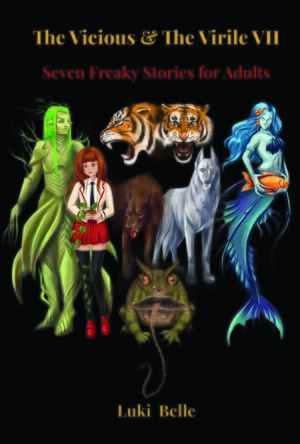
The Vicious & The Virile VII: Seven Freaky Stories for Adults
Book
A collection of short horror stories, The Vicious and The Virile VII offers a captivating...
Dark Fantasy Short Story Collection
Debbiereadsbook (1617 KP) rated Whispers and Wings (Brodyr Alarch #6) in Books
Dec 18, 2025
Gimme a few, ok? Cos it's taken me two days to get to this point after finishing and for me to come down, so if this review runs away with itself, I'm-a sorry, ok??
THis is book 6, the FINAL book in the Brodyr Alarch series. Now, I will say all the other 5 books can be read as stand alone books, within the series, and reading the prequel novel, Sealed with A Curse would be helpful, but not strictly necessary. HOWEVER, for THIS book, I think it's necessary to read Sealed first. It will give you the full scope of Gerallt's cruelty to Selene, and how his wing came to be. Because you don't get a full recap here, just hints as to what he did.
And you need that, because this book is heavy!
You can feel Gerallt's guilt about what he did, right from the start and you can feel the pressure he puts himself under. You can feel that pain he feels, every time he looks at Selene and remembers what he did to her. She has long since forgiven him and all the brothers, but Gerallt was the eldest, the instigator, and he knows that he can never atone for his sins, even after he paid his dues via the curse and it was lifted.
What this book is, my dear peeps, is a masterclass in keeping your writing head on, while everything else goes to pot, and actually being able to do Gerallt justice, because Lord knows the man needs his happy ever after!
I found myself crying for Gerallt in places, and Aderyn too, but not as much as Gerallt. When you find out how he judges himself, and what he did, it's painful reading. Aderyn lost a lot when her friend betrayed her, and you feel her pain too, but not as keenly as Gerallt.
I think, I've been waiting for Gerallt for so very long, so very VERY long, now I've finished his story, I want to cry from him all over again. It's taken him 24 years to get to this point, and now he has to make a decision.
I'm not going to tell you his decision, but I will tell you this: when he says those words, you feel the weight lifting off him, almost seeing it coming off the page, it's THAT powerful a scene. Honestly? I had to keep putting this down and coming back to it, because Gerallt pain for nearly all of the book is palapable, you can taste it.
There's no smex in this book, I don't think Aderyn and Gerallt even kiss, but there is so much emotion! So very much emotion, I'm getting emotional writing this review!
This book is full of Ms Sheppard's skill at describing things: people, places, things. She manages to enable you to see, so very clearly, what she is talking about. Example: when talking about the glamour on the castle, you can see it shifting the light slightly, shifting what people see. It's quite a skill!
I don't add books lightly to my Masterpiece shelf, and this is the third book I have added to that shelf in 3 weeks! But I must. I cannot NOT add it, because I think, given the wait for this book, it had the opportunity to be a diappointment and it really is quite the opposite.
This book is OUTSTANDING!!
But Lord now I'm sad. Sad because all the brothers have their happy ever after, Selene and Conway are happy with their family, and the Gods are happy, that Their subjects are happy, but it breaks my heart because this is the last time I'll be reading about these people!
Anyway, I told you this might run away with itself, and it did, so I'm wrapping this up, before I go and spoiler alert you!
The other books in the series have all been 4 or 5 stars, but this one?? Far surpasses any of those books and by a long mile.
5 full and shiny, but very VERY sad stars
*same worded review will appear elsewhere
